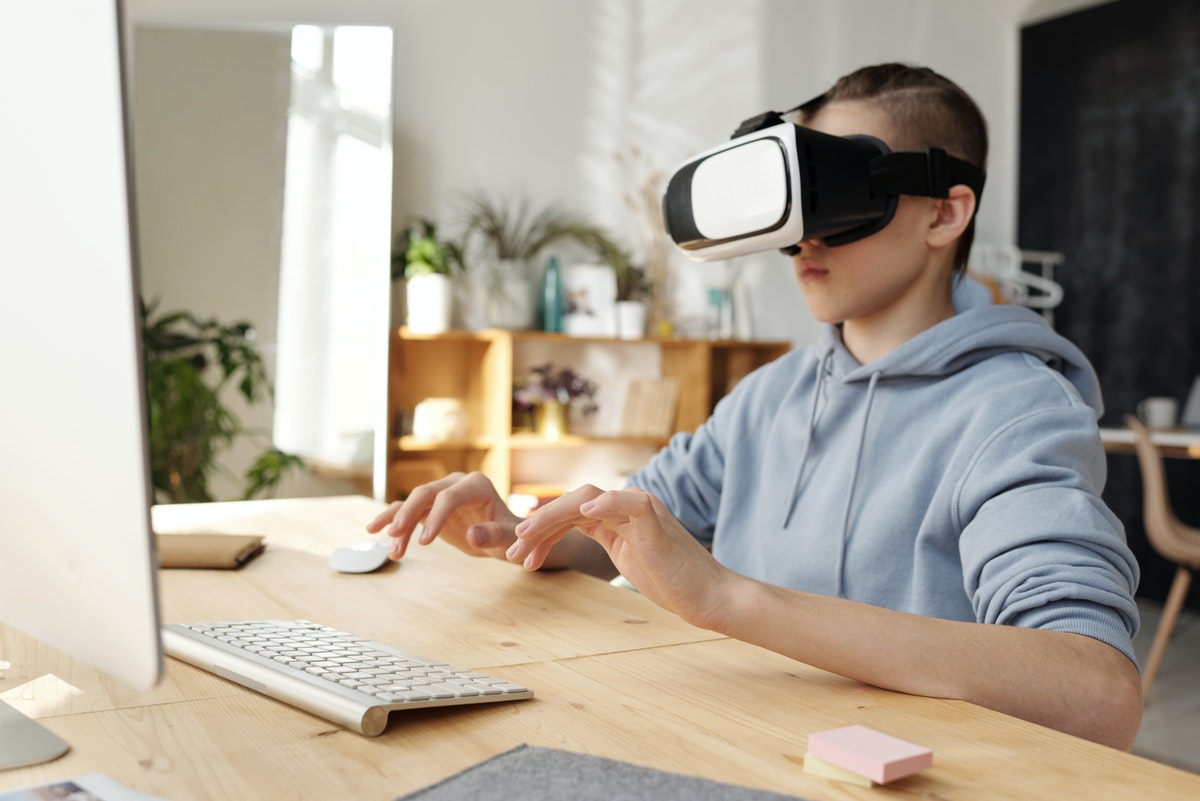
As our society evolves, so must our education systems. Today’s digital learners demand a more dynamic approach to education. One of the most exciting and promising new technologies to make its way into the classroom is virtual reality or VR—and for good reason.
The very nature of VR makes it more interactive and comprehensive when providing learning experiences for the modern learner. Students today have to deal with many distractions, and a more experiential lesson is key to ensuring knowledge retention.
That being said, not all educational VR content is effective. An educator should understand the technology’s strengths and opportunities for the classroom to make the most of VR. This article will provide some guidance on how best to use virtual reality in education and training.
The interactive nature of VR makes it a highly effective method of learning and not just teaching. To take full advantage of this, educators are encouraged to promote programs that will let students shape their own educational journeys.
Some VR programs are designed to let users create the content that they interact with. This is perfect for students since having their own creations as part of their lessons means that they have a greater stake in the process, further increasing their interest and sense of accountability.
According to Adobe, letting students use VR to create content boosts their creativity, alongside their learning capability.
VR is a means to enhance the learning experience. It is not meant to completely replace the established systems. VR opens up a lot of possibilities for lessons that are more experiential and interactive.
VR can be used to let students explore digital locations that are out of reach, such as the deep sea, outer space, and inside volcanoes. It can help students visualize models that are too complex to be illustrated, like atomic reactions, human physiology, and economic patterns.
VR is also used to simulate activities that would otherwise be too costly or even dangerous to do in real life. These include situations in engineering and medicine where students cannot afford to make mistakes.
As previously mentioned, VR is best utilized as a complement to conventional learning modalities. It also greatly benefits students when it is used alongside other similar technologies like augmented reality or AR.
Tapping into the strengths of both AR and VR means taking advantage of both digital and physical objects and assets to create an immersive educational experience. Items in the real world can be integrated into the VR or AR programs so students can have more tangible interactions.
VR devices are a significant investment for institutions. This means that some classrooms may only have a limited number of devices that students will have to share. Through AR, students without a VR headset can still participate by using other devices like smartphones, tablets, and computers.
The VR learning experience is an inevitable part of the evolution of the educational system. Sooner or later, VR will be an integral part of the curriculum of schools and universities. The technology’s ability to encourage participation and improve learning outcomes are the main reasons for VR’s growing popularity.
To take full advantage of VR in both training and education, students must be empowered to create their own content and make the most of both digital and physical resources. Educators must remember that VR technology is best used in education to enhance already-existing instruction methods and make it possible to perform tasks and activities in a risk-free environment.
For more information about VR in an educational setting, visit our contact page and get in touch.
Created By Euphoria XR | Privacy Policy | Sitemap| Contact Us